An Expert Safari Guide Guarantees a Superior Experience
An Expert Safari Guide Guarantees a Superior Experience
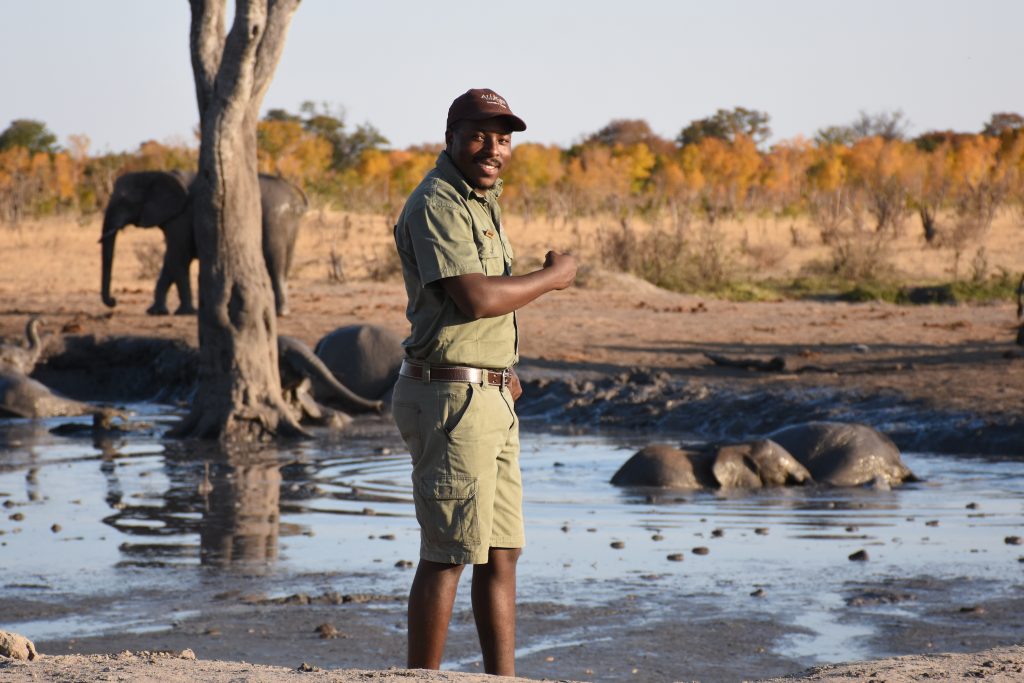
Makhosi Ncube-Guide in Zimbabwe
On my recent site inspection trip to Zambia and Zimbabwe with Jim Holden, President of Holden Safaris, I had the pleasure of experiencing, first-hand, how an expert guide, makes all the difference in your safari experience.
Jim Holden and I were on our way to inspect Somalisa Camp, a small luxury camp in Hwange National Park, Zimbabwe. We flew in from Mana Pools on a nine-passenger, Cessna Caravan, and landed on the hardened-dirt, Manga 3 runway.
A young man dressed in classic safari, stone-colored shirt and shorts, greeted us at the bottom of the small ladder as we exited the plane.
“You must be Jim and Sonia,” he said with his charming smile. “I’m Mak, your guide, from Somalisa Camp.”
- Our pilot and the small ladder
- Mak greeting us with his warm, friendly smile
- Mana Pools (north), Hwange National Park (west) on map
Mak hoisted our bags onto his shoulders, and as we reached his jeep, he handed us a much-appreciated, bottle of ice cold water. Leaning over the edge of his vehicle, he asked if he would you like to go straight to Somalisa Camp to rest after our three-hour flight, or if we would prefer to go on an afternoon game drive on our way back to the camp.
“We want to go on a game drive,” Jim said.
I gulped down the water and asked Mak, “What’s that horrible loud noise?”
“It’s the Heartbeat of Hwange” he said.
Sensing my confusion, Mak continued. “We have only one diesel water pump left in the park, and it’s right there.” He pointed towards the waterhole. “All the rest of our 50 boreholes are now solar powered. The elephants are used to the sound of the diesel pump and know that it means water; that’s why they come here in the hundreds, to drink and bathe. Shall we wait to see them?”
“Of course,” Jim said. I worried that we might sit in the jeep for several hours before they appeared, but Mak was right. It only took 5-minutes, and sure enough, hundreds of elephants approached the water-hole for their sundowner.

Elephants drinking in the “noisy” water hole
We watched in awe, as the elephants, and the babies drank, and then strolled over to cover themselves with mud, in the second, nearby waterhole. It was a daily ritual, and Mak explained that we were only 40 kilometers from Botswana, and that the elephants traipse back and forth between Zimbabwe and Botswana, in search of water.
After this unique experience, Mak drove us along the sandy road, and pointed out every bird, even the ones my eyes had a hard time finding. He was interesting, sharp and entertaining, and knew the answers to each and every question Jim and I had.
“What’s that tree?” I asked.
“That’s the lead tree,” Mak said. “It sinks and looks dead. When you burn it, you get a white ash which can be made into a paste to relieve tooth ache. The white ash can also be turned into white paint which the villagers use to paint their houses.
Now I was impressed, and felt a rapport with our guide. He was professional and informative, and I soon realized how special it was to have our own private guide who had gone through the rigorous training required to become an expert on nature and wildlife. I started quizzing Mak on everything.
“What’s that bird?” I asked.
“It’s the red-crested Korhaan, or the “suicide” bird as it’s commonly called.” Mak proceeds to pull out his book and points to the page with photos of this bird.
Mak told us that during the mating season. the male will fly up high, and at full throttle, dive straight towards the ground in suicide mode. The female picks her potential mate based on how impressive she perceives his close call to death.
Here is an eleven-second video demonstrating a suicide fall.
Equally crazy is the way the red-crested Korhaan dances and clicks during the mating season to catch the interest of a female.
Mak then drove us to Somalisa Camp, where we arrived just in time to see eleven wild-dogs drinking from the waterhole next to the lodge. It was a long and exciting day, and I looked forward to freshening up before our evening sundowner and dinner.
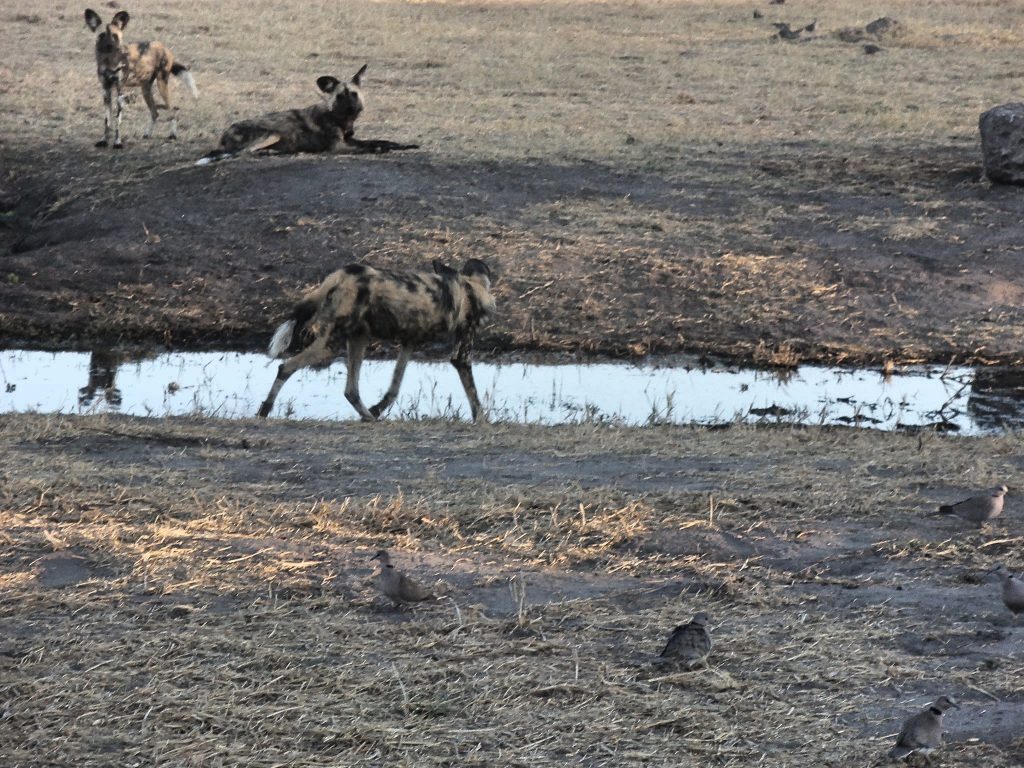
Wild dogs in front of Somalisa Camp
At the entrance to Somalisa Camp, we were greeted by three super-friendly staff members, including Yvonne, whom I shall never forget. She was a burst of energy and her enthusiasm was contagious.
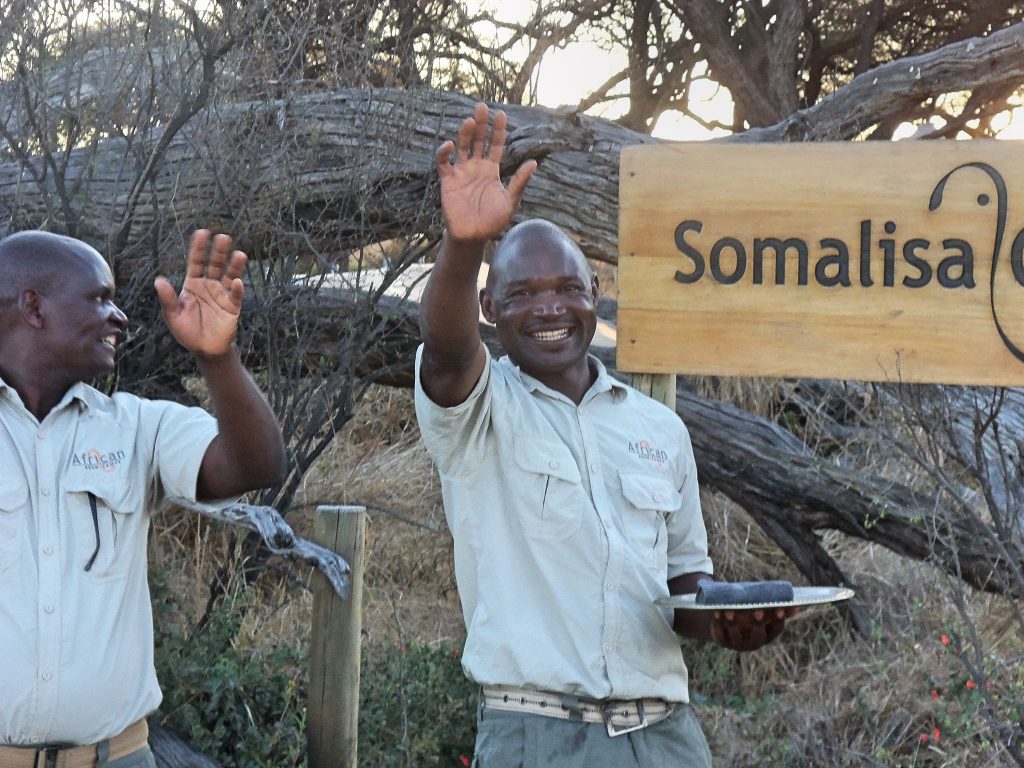
The staff greeting us at Somalisa Camp in Hwange, Zimbabwe
- Jim Holden speaking to a staff member
- Soniaby pool and watering hole at Somalisa Camp
This was just the start of our safari in Hwange National Park, and having Mak as our guide, exemplified Jim Holden’s definition of the: “luxury of experience.” Most of our travelers at Holden Safaris are looking for the superior safari experience, and one of the key components to an outstanding safari, is a well-qualified, professional guide. I’m so happy I had that experience with Mak. Don’t miss next week’s blog post where I interview Mak about his daily life as a guide.
Next weeks’s blog post: An Interview with Mak. “A Day in the Life of a Safari Guide.”

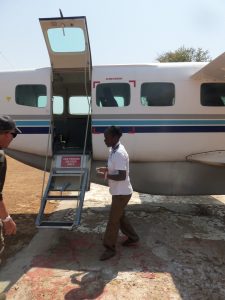
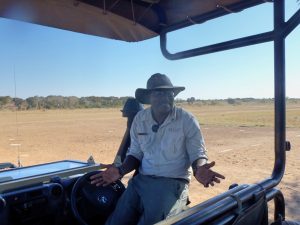
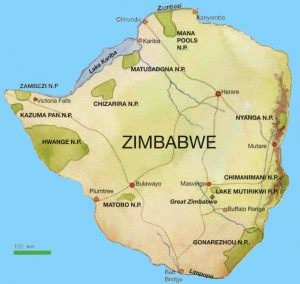
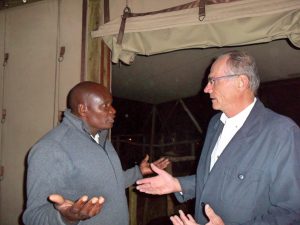
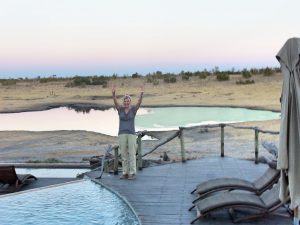
Thus a good article there.Great job Mak..keep it up & thank you for being a great host. I am proud of you dear.
Thanks for your comment. Yes, he did a great job as our guide.
nice blog…can’t wait to be guided by Mak.
You’ll be pleasantly surprised.
Great blog, Africa is so interesting and it would be great to have such a knowledgeable guide. Thanks for sharing.
Thanks Susan. It does make such a difference. We had one guide in another location who was not as informed. It does make a huge difference. Now I can see it.